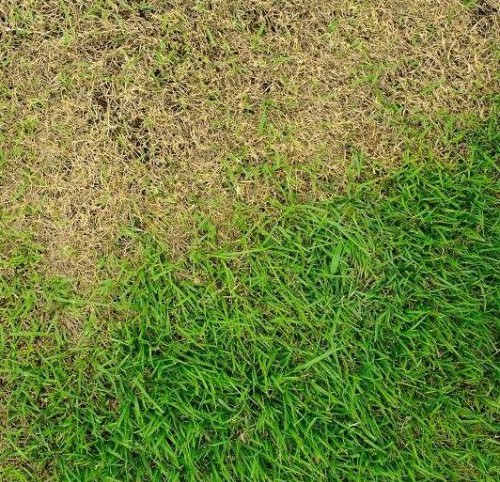The Best Mowing Knowledge

The Agronomic Superiority of Bermudagrass: A Deep Dive into Cynodon dactylon's Resilience and Adaptation
Among warm-season turfgrasses, Cynodon dactylon, commonly known as Bermudagrass, stands as an exemplar of agronomic resilience and adaptive superiority. Its widespread use in high-traffic sports fields, golf courses, and residential landscapes across tropical and subtropical regions is not merely coincidental but a testament to its highly evolved physiological and morphological characteristics. This article delves into the intrinsic properties that position Bermudagrass as a prime subject for turfgrass science and an optimal choice for demanding environments.
1. Evolutionary Adaptation and Geographic Distribution
Originating from the savannas of East Africa, Cynodon dactylon evolved under conditions of intense solar radiation, intermittent precipitation, and frequent herbivory. This evolutionary pressure fostered a robust genetic predisposition for drought tolerance, heat resistance, and rapid recuperative growth. Its subsequent global dissemination, facilitated by human migration and agricultural expansion, underscores its remarkable capacity to naturalize in diverse edaphic and climatic zones.
2. Morphological Resilience: Stolons, Rhizomes, and Dense Canopy
The morphological architecture of Bermudagrass is foundational to its toughness:
- Stolons: These above-ground, horizontal stems allow for rapid lateral expansion and efficient colonization of disturbed areas. Each node on a stolon possesses meristematic tissue capable of initiating new shoots and adventitious roots, facilitating rapid vegetative propagation.
- Rhizomes: Complementing stolons, underground rhizomes provide an additional layer of resilience. They serve as carbohydrate storage organs, enabling quick recovery from severe defoliation, drought, or winter dormancy. Their subterranean position also offers protection from mechanical damage and surface pathogens.
- Dense Canopy Formation: The combined action of stoloniferous and rhizomatous growth leads to an incredibly dense turf sward. This dense canopy effectively outcompetes most broadleaf weeds for light, water, and nutrients, reducing the necessity for aggressive herbicidal interventions.
3. Physiological Efficiency: C4 Photosynthesis
Bermudagrass is a C4 plant, a critical physiological adaptation for warm climates. The C4 photosynthetic pathway enhances photosynthetic efficiency by concentrating carbon dioxide (CO2) around the enzyme RuBisCO, thereby minimizing photorespiration, especially under high light intensity and elevated temperatures. This results in:
- Superior Water Use Efficiency: C4 plants generally require less water per unit of biomass produced compared to C3 plants, making Bermudagrass exceptionally drought tolerant.
- High Growth Rate: Under optimal conditions, Bermudagrass exhibits a rapid growth rate, allowing for quick establishment and recovery.
- Optimal Performance in Heat: Its C4 mechanism functions most efficiently at higher temperatures (30-35°C), where C3 plants become stressed.
4. Stress Tolerance Mechanisms
Beyond its C4 pathway, Cynodon dactylon employs multiple strategies to withstand environmental stressors:
- Drought Tolerance: Beyond water-use efficiency, Bermudagrass exhibits osmotic adjustment, leaf rolling, and deep root penetration (up to 6 feet in some conditions) to access available soil moisture. It can also enter a state of dormancy during prolonged drought, conserving energy until conditions improve.
- Heat Tolerance: Its dark green varieties absorb solar radiation efficiently, and its root system helps in cooling. The high-temperature optima of its enzymes contribute to its functionality in extreme heat.
- Salinity Tolerance: Certain cultivars show a remarkable tolerance to saline conditions, making them suitable for coastal regions or areas with brackish irrigation water, a trait attributed to efficient ion exclusion and compartmentalization mechanisms.
- Traffic Tolerance: The robust stolon/rhizome system and dense growth habit provide excellent wear tolerance, allowing it to recover quickly from intense foot traffic and athletic activity.
5. Cultivar Diversity and Agronomic Implications
Decades of breeding programs have yielded a plethora of Bermudagrass cultivars, each optimized for specific attributes such as finer texture, improved cold tolerance, enhanced disease resistance, or superior shade performance. This genetic diversity allows turf managers to select the ideal Bermudagrass for precise agronomic objectives, from ultra-dwarf putting greens to coarse-bladed roadside vegetation.
Conclusion: A Masterpiece of Turfgrass Evolution
Cynodon dactylon represents a pinnacle of turfgrass evolution, meticulously adapted to thrive in challenging warm-season environments. Its intertwined morphological and physiological adaptations—robust stolon/rhizome networks, efficient C4 photosynthesis, and sophisticated stress tolerance mechanisms—collectively contribute to its unparalleled resilience and recuperative capacity. For the discerning turf manager and the academic agronomist, Bermudagrass offers a compelling case study in natural selection yielding agronomic excellence, ensuring its continued prominence in a world increasingly conscious of sustainable landscape management.


.png)



